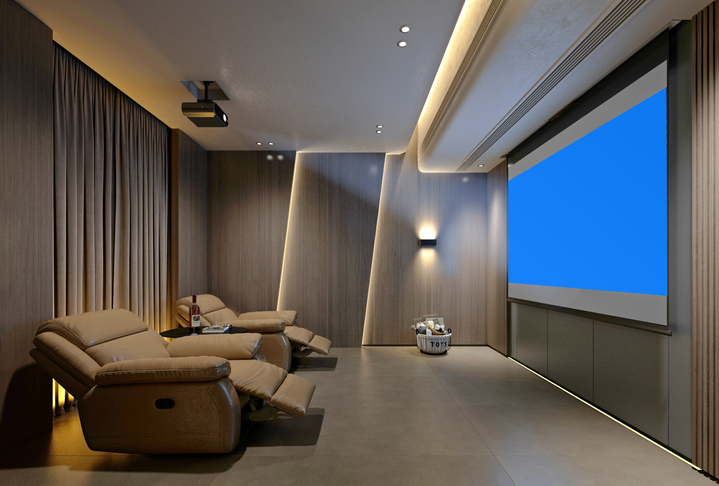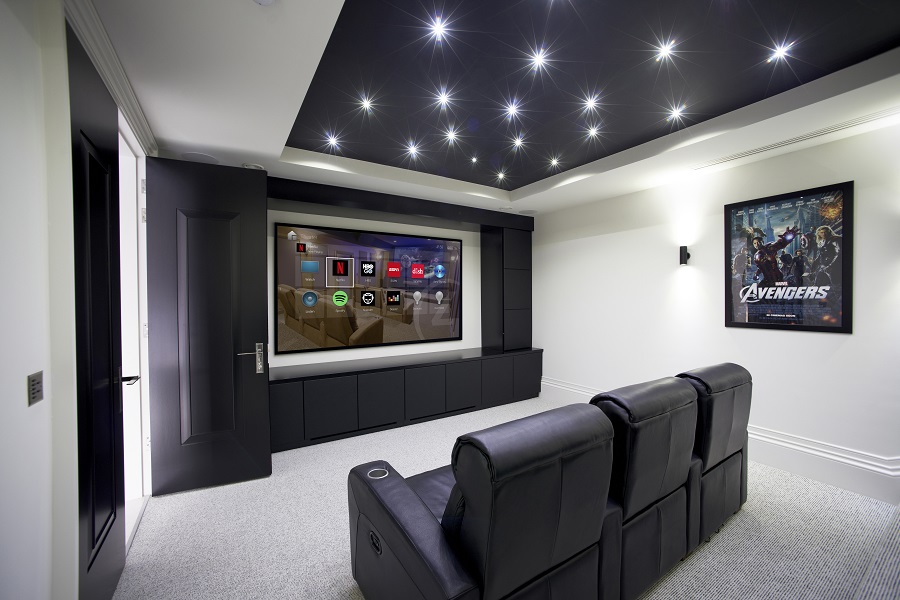Home Theater 101: Everything You Required to Know for a Cinematic Experience at Home
Developing a home theater that measures up to the motion picture experience of an industrial theater involves careful consideration of several components, consisting of display selection, sound systems, and space format. Whether you are pondering the optimal screen size or the complexities of surround sound, understanding these fundamentals is vital.
Choosing the Right Screen
When setting up a home movie theater, selecting the ideal screen can make or damage the watching experience - home theater tampa. The screen functions as the centerpiece of your arrangement, influencing picture top quality, seeing angles, and total aesthetic. Key elements to think about include screen resolution, kind, and dimension
Initially, identify the suitable screen size based on your area measurements and seating range. Next off, pick between various screen kinds, such as fixed-frame, motorized, or retractable displays, each offering unique benefits.
Resolution is an additional essential factor. For a really immersive experience, consider a screen designed for 4K or even 8K content, ensuring sharpness and quality. Furthermore, think about the screen's gain, which affects brightness and contrast; a greater gain can boost brightness in well-lit rooms, while a lower gain may be preferable for darker atmospheres.
Choosing Audio Equipment
Audio equipment is a crucial element of any type of home movie theater system, considerably boosting the overall watching experience. The option of audio gear can figure out the depth, quality, and immersion of audio, important for creating a cinematic atmosphere.
When picking audio devices, take into consideration a border stereo, which commonly consists of a receiver, several speakers, and a speaker. A 5.1 or 7.1 network system is suggested, where the first number represents the speakers and the second the speaker, offering an immersive soundscape. The receiver is the heart of the system, handling audio and video clip signals, and need to support modern-day layouts like Dolby Atmos for an improved spatial experience.
Quality speakers are essential; try to find versions that use a well balanced noise profile with great bass action. Floor-standing speakers can generate richer audio, while bookshelf choices save area. In addition, take into consideration wireless options for convenience of installation, although wired systems typically deliver exceptional efficiency.

Optimum Seating Plans
Creating an optimal home theater experience pivots substantially on optimum seating setups. The arrangement of seats plays a critical duty in both comfort and viewing quality, directly affecting the total cinematic experience.
First, consider the display size and watching range. A common guideline is to place seats at a range approximately 1.5 to 2.5 times the angled dimension of the screen. This makes certain an immersive experience without straining the eyes.
Following, elevation is vital. The back rows must be greater than the front to prevent blockages if your seating is in a tiered style. For level seating, make certain that the front row is not also near the screen, and that everybody has a clear line of vision.
Furthermore, take into consideration the arrangement in terms of social characteristics. Group seats can boost the public experience, while private seats may be favored for personal watching.

Finally, focus on comfort with ergonomic seating that sustains extended viewing durations. Incorporating recliner chairs or cushioned seats can substantially boost the experience, making the home theater a favored location for both home entertainment and leisure.
Lighting and Atmosphere
Efficient lights and setting are vital parts of a properly designed home cinema, as they substantially influence the watching experience. The best lights can enhance the motion picture feeling, while inadequate choices can detract from it. For optimal results, take into consideration a split lighting method that includes ambient, task, and accent illumination.
Ambient lights provides general illumination, guaranteeing that the area is not totally dark, which can stress the eyes. Dimmer buttons are very advised, permitting adjustments based on the content being viewed. Task lighting, such as wall sconces or floor lights, offers functional illumination for activities like reading or navigating the space without disrupting the overall atmosphere.
Accent lights can be made use of to highlight building features or develop centerpieces, adding depth and passion to the space. try this website LED strip lights behind screens or along racks can supply a subtle radiance that improves the visual experience without frustrating the customer.

Wiring and Installation Tips
A tactical circuitry configuration is vital for attaining ideal performance in your home cinema system. Correct electrical wiring not only ensures high-quality sound and video clip signals however also boosts the general aesthetic of your room. Begin by drawing up your design, identifying where each part will be placed, including your display, speakers, and receiver.
When selecting wires, prioritize top quality, suitably assessed wiring to lower signal loss. HDMI cable televisions should be made use of for video links, while speaker cord ought to match the requirements of your speakers and amplifier. Choose in-wall rated cables to abide by safety criteria and maintain a clean appearance.

Verdict
In recap, developing an outstanding home theater experience requires cautious factor to consider of different components, consisting of display option, audio tools, seating arrangements, lighting, and wiring. By prioritizing these factors, a cinematic atmosphere can be successfully replicated, allowing for immersive seeing experiences that learn this here now match conventional movie theater settings.
Developing a home cinema that measures up to the motion picture experience of a business theater includes cautious consideration of multiple components, consisting of display choice, audio systems, and room layout.When establishing up a home cinema, choosing the best screen can make or damage the watching experience. Next off, select between numerous display types, such as fixed-frame, motorized, or retracting displays, each offering distinct advantages. For an absolutely immersive experience, take into consideration a display developed for 4K or even 8K web content, making sure sharpness and clarity.In recap, producing a home theater tampa remarkable home theater experience calls for cautious consideration of different components, consisting of screen option, audio devices, seating arrangements, lighting, and electrical wiring.